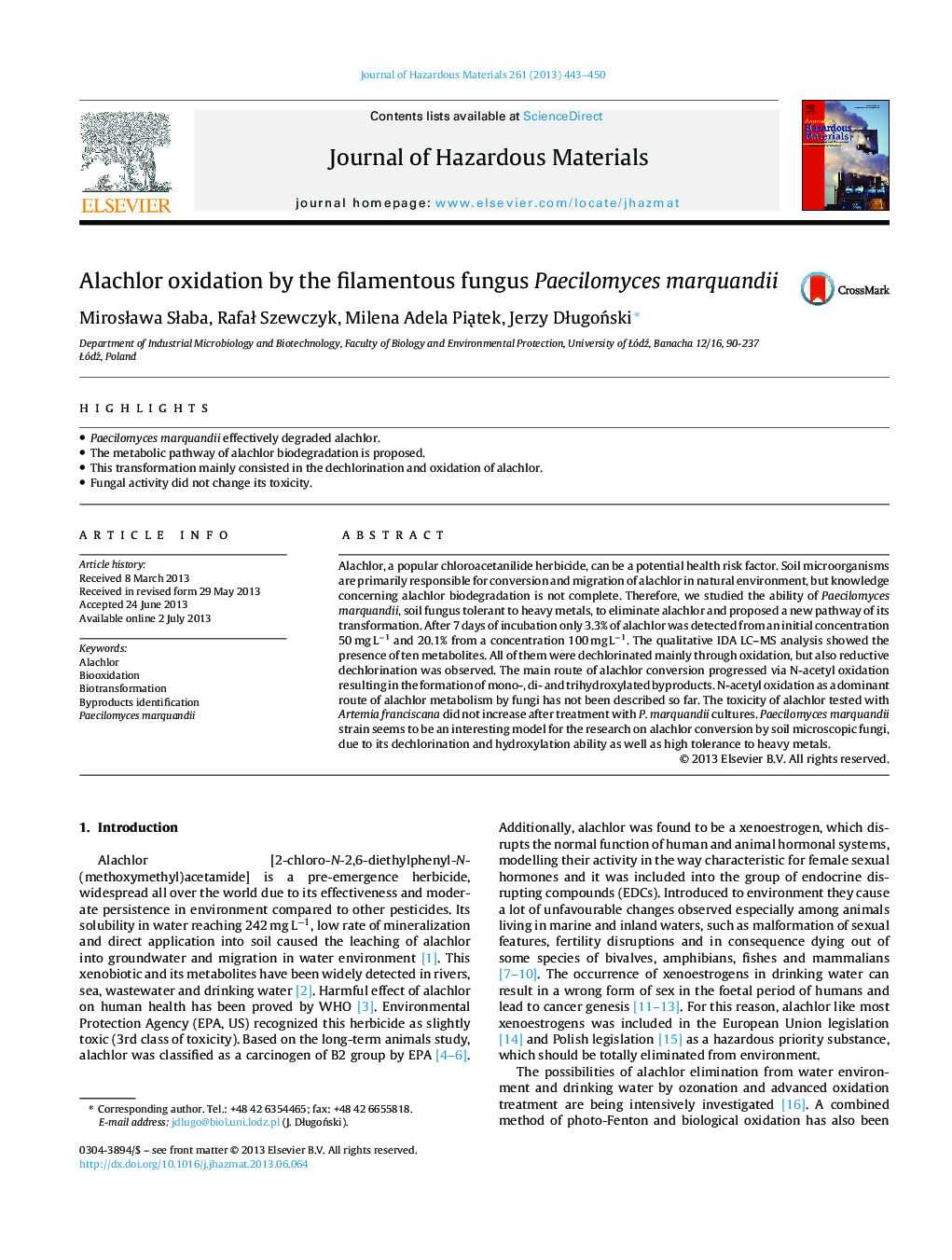| Article ID | Journal | Published Year | Pages | File Type |
|---|---|---|---|---|
| 6972055 | Journal of Hazardous Materials | 2013 | 8 Pages |
Abstract
Alachlor, a popular chloroacetanilide herbicide, can be a potential health risk factor. Soil microorganisms are primarily responsible for conversion and migration of alachlor in natural environment, but knowledge concerning alachlor biodegradation is not complete. Therefore, we studied the ability of Paecilomyces marquandii, soil fungus tolerant to heavy metals, to eliminate alachlor and proposed a new pathway of its transformation. After 7 days of incubation only 3.3% of alachlor was detected from an initial concentration 50 mg Lâ1 and 20.1% from a concentration 100 mg Lâ1. The qualitative IDA LC-MS analysis showed the presence of ten metabolites. All of them were dechlorinated mainly through oxidation, but also reductive dechlorination was observed. The main route of alachlor conversion progressed via N-acetyl oxidation resulting in the formation of mono-, di- and trihydroxylated byproducts. N-acetyl oxidation as a dominant route of alachlor metabolism by fungi has not been described so far. The toxicity of alachlor tested with Artemia franciscana did not increase after treatment with P. marquandii cultures. Paecilomyces marquandii strain seems to be an interesting model for the research on alachlor conversion by soil microscopic fungi, due to its dechlorination and hydroxylation ability as well as high tolerance to heavy metals.
Related Topics
Physical Sciences and Engineering
Chemical Engineering
Chemical Health and Safety
Authors
MirosÅawa SÅaba, RafaÅ Szewczyk, Milena Adela PiÄ
tek, Jerzy DÅugoÅski,
